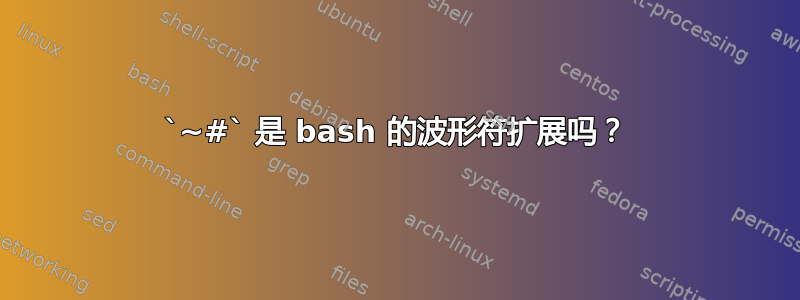
波浪号是~#bash 的扩展吗?我没有找到它https://www.gnu.org/software/bash/manual/html_node/Tilde-Expansion.html。我的问题来自https://unix.stackexchange.com/a/506532/674。谢谢。
$ ~#
The following connections are open:
#0 client-session (t4 r0 i0/0 o0/0 fd 5/6 cc -1)
#1 x11 (t4 r3 i0/0 o0/0 fd 8/8 cc -1)
答案1
ssh不,它是列出转发连接的特殊转义代码。显然,您已通过 SSH 连接连接到 shell。
bash~#如果您在命令行中键入,它本身将响应“未找到命令” :
$ ~#
bash: ~#: command not found
请注意,要键入~ 进入外壳作为按 后的第一个字符,如果您的 shell 位于 SSH 连接的另一端,则由于这些转义码,Enter您将必须按两次。~
其他可用的命令列于手册ssh(这些需要作为按后的第一个字符输入Enter):
~. Disconnect.
~^Z Background ssh.
~# List forwarded connections.
~& Background ssh at logout when waiting for forwarded connection /
X11 sessions to terminate.
~? Display a list of escape characters.
~B Send a BREAK to the remote system (only useful if the peer
supports it).
~C Open command line. Currently this allows the addition of port
forwardings using the -L, -R and -D options (see above). It also
allows the cancellation of existing port-forwardings with
-KL[bind_address:]port for local, -KR[bind_address:]port for
remote and -KD[bind_address:]port for dynamic port-forwardings.
!command allows the user to execute a local command if the
PermitLocalCommand option is enabled in ssh_config(5). Basic
help is available, using the -h option.
~R Request rekeying of the connection (only useful if the peer
supports it).
~V Decrease the verbosity (LogLevel) when errors are being written
to stderr.
~v Increase the verbosity (LogLevel) when errors are being written
to stderr.


